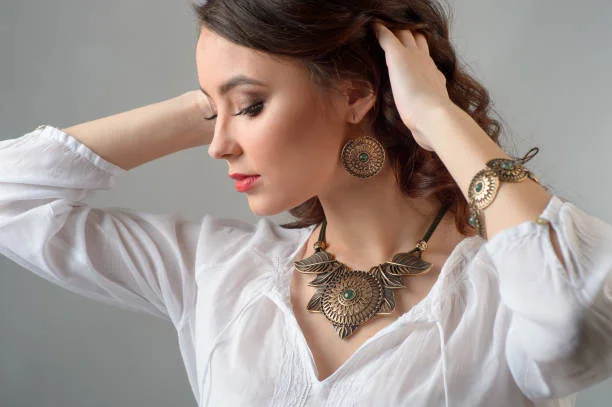Australia has built a reputation for producing some of the world’s most distinctive and carefully crafted jewellery pieces. Australian designed jewellery stands out because it combines unique design sensibilities inspired by the country’s natural landscapes with exceptional technical craftsmanship and ethical sourcing practices. Unlike mass-produced pieces from overseas factories, Australian jewellers typically work in smaller studios where each piece receives individual attention. This approach results in jewellery that tells a story, reflects genuine artistic vision, and maintains quality standards that have made Australian pieces increasingly sought after in international markets.
What Makes Australian Design Different
Australian jewellery design draws heavily from the country’s natural environment in ways that feel authentic rather than gimmicky. You’ll see organic shapes inspired by coastal rock formations, color palettes that mirror the outback’s earthy tones, and textures that echo eucalyptus bark or weathered stone.
This connection to landscape isn’t superficial. Many Australian designers spend time in remote areas, photographing textures, collecting color references, and letting the environment genuinely influence their creative process. That shows in the final pieces—there’s a rawness and honesty that’s hard to fake.
The design philosophy tends toward wearability too. Australian pieces often balance artistic expression with everyday practicality. You get interesting, conversation-starting designs that still work with normal clothes and daily life, not just special occasions.
Cultural influences play a role as well. Australia’s multicultural population means designers bring diverse perspectives, and there’s also increasing collaboration with Indigenous artists that incorporates traditional patterns and storytelling elements in respectful, collaborative ways.
Related post: expand your journey with stories built to add more perspective.
Craftsmanship Standards That Set Australian Pieces Apart
Australian jewellery education programs are genuinely rigorous. Most professional jewellers complete years of technical training covering everything from traditional hand fabrication to modern CAD design and casting processes. This isn’t hobby-level stuff—it’s serious technical skill development.
Hand fabrication remains important even as technology advances. Many Australian jewellers still do significant hand work—sawing, filing, soldering, stone setting—because it gives them control over details that machines miss. You can feel the difference in finished pieces. Edges are refined just right, proportions are balanced carefully, and there’s an attention to finish that mass production can’t match.
Stone setting deserves its own mention because this is where a lot of jewellery quality shows up or fails. Australian setters tend to be meticulous about secure settings that also show stones to their best advantage. Whether it’s traditional prong settings or more contemporary bezel work, the stones sit right, catch light properly, and stay secure through normal wear.
Quality control happens at multiple stages. Reputable studios check pieces at various production points rather than just inspecting the finished product. This catches problems early when they’re easier to fix and ensures consistent quality across different pieces.
Sourcing and Ethical Practices
Australia has significant gemstone resources, and many designers prioritize using locally sourced stones when possible. Australian sapphires from Queensland and New South Wales come in amazing colors beyond just blue—you’ll find parti sapphires with multiple colors in a single stone, peachy-pink stones, and deep greens that are genuinely unique.
South Sea pearls from Australia’s northern waters are some of the finest in the world. These large, lustrous pearls develop in pristine tropical waters, and Australian pearl farms maintain strict environmental standards. When you buy Australian South Sea pearl jewellery, you’re getting genuinely premium materials.
Ethical sourcing extends beyond Australian stones though. Responsible studios verify their supply chains for imported stones and metals. They ask questions about where materials come from, avoid conflict diamonds, and increasingly use recycled metals to reduce environmental impact.
This transparency matters more than ever. Consumers want to know their jewellery wasn’t produced through exploitative labor or environmentally destructive mining. Australian jewellers who prioritize ethical sourcing can document their supply chains and stand behind their materials.
Contemporary Australian Jewellery Movements
There’s a strong contemporary movement that pushes boundaries of what jewellery can be. These pieces might use unconventional materials like polymer clay, wood, or found objects alongside precious metals. The designs challenge traditional ideas about beauty and value, creating wearable art that makes statements.
This contemporary work isn’t for everyone, but it shows the breadth of Australian jewellery design. You’ve got everything from avant-garde gallery pieces to refined everyday jewellery, all coexisting in a relatively small market.
Indigenous collaboration has grown significantly, with non-Indigenous jewellers partnering with Aboriginal artists to create pieces that incorporate traditional designs. Done right, with proper compensation and credit, these collaborations preserve cultural knowledge while creating economically valuable opportunities for Indigenous communities.
Sustainable design is becoming a major focus too. Studios are experimenting with recycled materials, minimizing waste in production, and creating pieces designed to last generations rather than following fast-fashion trends. This aligns well with traditional jewellery values—good pieces should last forever, not end up in landfills after a season.
Investment Value of Australian Pieces
Australian jewellery from established designers tends to hold value well. Limited production runs mean pieces don’t become oversaturated in the market, and strong craftsmanship means they physically hold up to wear over decades.
Certain designers have developed significant followings, and their earlier work now commands premium prices in secondary markets. This isn’t guaranteed obviously—not every piece appreciates—but work from respected Australian jewellers tends to maintain value better than mass-produced alternatives.
The key is buying from legitimate studios with established reputations. Look for designers who’ve been working for years, have exhibited their work, and have documentation of their pieces. Provenance matters in jewellery just like it does in art.
Custom pieces offer something else entirely—the value is personal rather than market-based. You’re getting exactly what you want, made specifically for you, with your input throughout the process. That’s worth something that goes beyond resale potential.
Finding Quality Australian Jewellers
Gallery representation often indicates serious designers. When galleries choose to carry someone’s work, they’re vouching for quality and authenticity. Gallery pieces cost more, but you’re paying for curatorial selection and the gallery’s relationships with proven makers.
Studio visits let you see where and how pieces are made. Many jewellers welcome appointments to see their workspace and discuss custom projects. This direct relationship with the maker adds meaning to purchases and lets you verify their working methods firsthand.
Online presence matters now, but look beyond pretty Instagram photos. Read about their process, check how long they’ve been working, look for features in legitimate publications or exhibitions. Real jewellers have depth to their practice beyond social media aesthetics.
Certifications and professional memberships indicate commitment to the field. Organizations like the Jewellers Association of Australia require members to meet certain standards. It’s not foolproof, but membership in professional bodies suggests someone takes their work seriously and maintains industry connections.
Explore more stories made to guide you, inspire you, and push you ahead.






